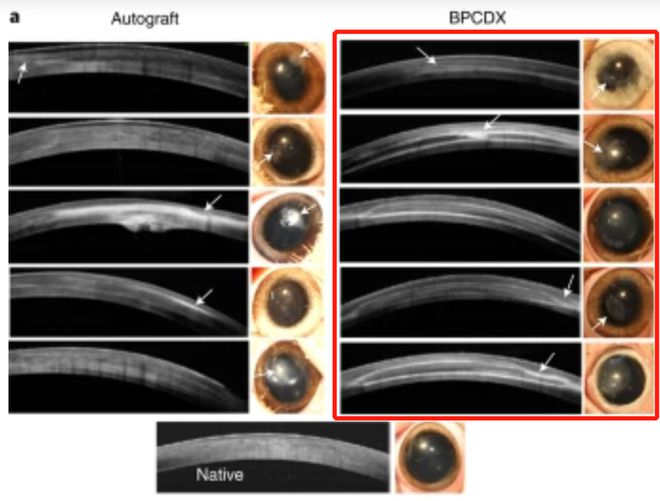A few days ago, the “Nature” sub-journal “Nature Biotechnology” released a study, scientists used pig skin to make implants similar to human corneas, and a pilot study has been carried out to restore vision in 20 patients without adverse reactions.
Right now, 12.7 million people worldwide are sick or even blind due to corneal damage. The most common treatment is corneal donation and transplantation. But data show that, on average, only one in every 70 patients is eligible for a corneal transplant.
In my country alone, there are about 4-5 million blind patients due to corneal disease, and this number is increasing at a rate of 100,000 per year. Among them, most patients with corneal blindness need corneal transplantation to restore their sight, but only 8,000-10,000 cases of corneal transplantation are performed in China every year.
In this case, the pig “covered with treasure” once again made a great contribution.
Rajali, a professor of experimental ophthalmology at Linköping University in Sweden and the lead author of the study, said the results show that the biomaterial developed this time is expected to meet all standards for human implants. At the same time, it can be mass-produced and stored for up to two years, which may solve the shortage of corneal donations.
▌How is this technology accomplished?
The British “Daily Mail” reported that one of the main components of the cornea is collagen, and researchers extracted collagen molecules from pigskin to develop a corneal stroma substitute, which they called double-cross-linked bioengineering Pig structure (bioengineered porcine construct, double crosslinked, referred to as BPCDX).
Figure | BPCDX appearance, this figure is used to show the transparency and refraction performance of the material
The material itself has two main advantages. On the one hand, the raw material pig skin is cheap and easy to obtain; on the other hand, the cornea of human donors needs to be used within two weeks, while the “porcine skin cornea” can be stored for up to two years.
In addition, the implantation method also requires less invasive surgery.
In general, the standard procedure for corneal implantation involves surgical removal of the patient’s damaged cornea, followed by suture of the donated cornea.
In contrast, bio-keratoplasty requires no removal of the patient’s tissue and no sutures. The new surgical method requires only a small incision to be made to insert the implant into the existing cornea.
▌How effective is the new technology?
To test whether the technology is “reliable”, researchers have also conducted feasibility studies in Iran and India.
Twenty patients with advanced keratoconus were implanted with BPCDX without removing existing tissue or using sutures.
Studies have shown that the surgery was quite successful, with rapid tissue healing and no complications. The participants’ vision improved to the same extent as the cornea transplant using donor tissue.
Among the 20 subjects, 14 were legally blind, and they all recovered their vision two years after the operation; 3 of them were legally blind in India, and their visual acuity returned to the standard visual acuity value of 1.0 after surgery.
At the same time, these 20 people were all intolerant of contact lenses before the operation, and they could wear contact lenses for a long time two years after the operation.
Postoperatively, patients only need to instill 8 weeks of immunosuppressive eye drops to prevent implant rejection. And in the two-year follow-up period after surgery, the researchers did not observe adverse phenomena.

Figure | The effect after 6 months of BPCDX implantation
It is worth noting that, in ophthalmology, there are a number of diseases associated with changes in collagen, including keratoconus, conjunctival relaxation, myopia, etc. The research team is also planning to use the new technology to treat more eye diseases.
However, larger clinical studies and regulatory market approvals are needed before the implants can be used in healthcare. But even so, the technology may offer some hope for patients who are still waiting to donate their corneas.



GIPHY App Key not set. Please check settings